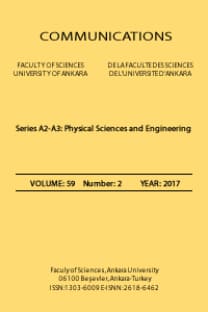Enhancement of a Low-Cost Intelligent Device for Improving Energy Efficiency in Buildings
Enhancement, intelligent device, energy efficiency
___
[1] O. Timur, “Design and Implementation of a Wireless Sensor Network for Energy Monitoring, Analysis and Management in Smart Buildings,” Çukurova University Institute of Natural and Applied Sciences, PhD Thesis, 215 pages, 24 January 2018.[2] O. Timur, K. Zor, O. Celik, A. Teke, “Development of an Intelligent Energy Measurement Device for Buildings,” 2nd International Conference on Theoretical and Applied Computer Science and Engineering-Summer (ICTACSE 2018), ISBN:978-605-9546-12-6, pp.16-21, JUNE 29 – 30, 2018. (Istanbul, Turkey)
[3] O. Timur, K. Zor, O. Celik, H.B. Yıldırım, A. Teke, “Design and Implementation of Smart Energy Measurement Plug in Smart Buildings,” Digital Proceedings of the 12th Conference on Sustainable Development of Energy, Water and Environment Systems (SDEWES2017), (0732), pp.1-12, 4-8 October 2017. (Croatia)
[4] L. Jiechao, “A software approach for combining real time data measurement and building energy model to improve energy efficiency,” Electrical Engineering and Computer Sciences University of California at Berkeley: Technical Report: UCB/EECS-2014-37. 14 p, 2014.
[5] A. Costa, M.M. Keane, J.I. Torrens, E. Corry, “Building operation and energy performance: Monitoring, analysis and optimization kit,” Elsevier: Applied Energy, Vol.101, pp. 310-316, 2013.
[6] H.U. Gokce, K.U. Gokce, “Multidimensional energy monitoring, analysis and optimization system for energy efficient building operation,” Elsevier: Sustainable Cities and Society, Vol.10, pp 161-173, 2014.
[7] O. Arslan, “ZigBee ile Bina İçi Güvenlik Otomasyon Sistemi,” İTÜ. Elektrik Elektronik Mühendisliği - Bitirme Tezi. 50 p, 2009.
[8] N.C. Batista, R. Melicio, J.C.O. Matias, J.P.S. Catalao, “Photovoltaic and wind energy systems monitoring and building/home energy management using ZigBee devices within a smart grid,” Elsevier: Energy, Vol.49, pp 306-315, 2013.
[9] C. Jin, “A Smart Home Networking Simulation for Energy Saving,” Master of Applied Science in Electrical and Computer Engineering at Carleton University, 2011.
[10] R.V. Sakhare, B.T. Deshmukh, “Electric Power Management using ZigBee Wireless Sensor Network,” IJAET: International Journal of Advances in Engineering & Technology, Vol.4, pp 492-500, 2012.
[11] K. Gill, S.H. Yang, F. Yao, X. Lu, “A ZigBee-Based Home Automation System,” IEEE Transactions on Consumer Electronics, Vol.55, No:2, pp. 422-430, May 2009.
[12] C.Pham, “Communication performances of IEEE 802.15.4 wireless sensor motes for data-intensive applications: A comparison of WaspMote, Arduino, MEGA, TelosB, MicaZ and iMote2 for image surveillance,” Elsevier: Journal of Network and Computer Applications Vol.46, pp. 48-59, 2014.
- ISSN: 1303-6009
- Yayın Aralığı: Yılda 2 Sayı
- Başlangıç: 2019
- Yayıncı: Ankara Üniversitesi
MOVING OBJECT DETECTION AND CLASSIFICATION IN SURVEILLANCE SYSTEMS USING MOVING CAMERAS
Ozge MERCANOGLU SİNCAN, Hacer YALİM KELES, Suleyman TOSUN
VISUALLY ENHANCED SOCIAL MEDIA ANALYSIS OF REFUGEES IN TURKEY
Abdullah BÜLBÜL, Salah HAJ ISMAİL
THE TRUE AND APPARENT ELLIPTICAL ORBITS OF A VISUAL BINARY STAR
ULTRAHIGH SENSITIVE REFRACTIVE INDEX SENSOR BASED ON TAPERED MULTICORE OPTICAL FIBER
Zinah Abbas AL-MASHHADANI, İsa NAVRUZ
A REVIEW ON SYSTEM IDENTIFICATION IN POWER GENERATION SYSTEMS
PHOTOMETRIC AND SPECTROSCOPIC VARIABILITY OF A POSSIBLE β CEPHEI STAR; V960 TAU
Enhancement of a Low-Cost Intelligent Device for Improving Energy Efficiency in Buildings
Oğuzhan TİMUR, Kasım ZOR, Özgür ÇELİK, Ahmet TEKE
AN ENSEMBLE MODEL FOR COLLABORATIVE FILTERING TO INVOLVE ALL ASPECTS OF DATASET
INTERVIEW IN LAND CONSOLIDATION USING GENETIC ALGORITHM
